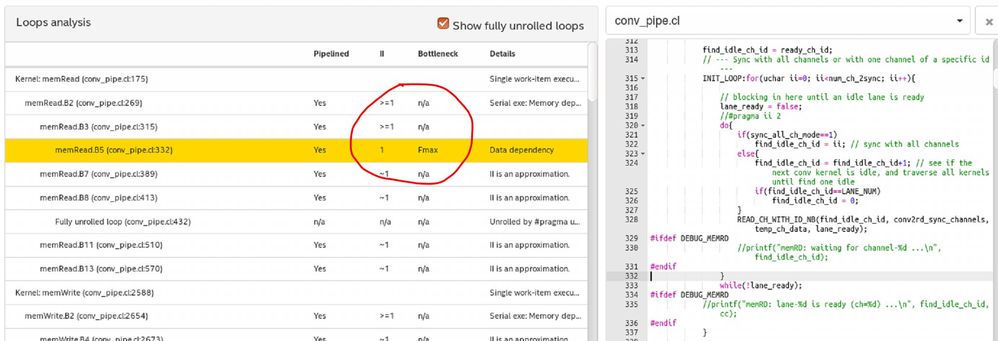- Mark as New
- Bookmark
- Subscribe
- Mute
- Subscribe to RSS Feed
- Permalink
- Report Inappropriate Content
I was compiling the same kernel code by using both v18.1 std and pro. For the standard version, I could achieve a fmax around 220 MHz, but for pro version, the fmax is only 190 MHz.
I further compared the report.html, and I found that loop dependence is found in the pro version report, but in the standard version everything is OK.
This does not happen when I was using v18.0 and older versions. What have changed in v18.1 ?
Link Copied
- Mark as New
- Bookmark
- Subscribe
- Mute
- Subscribe to RSS Feed
- Permalink
- Report Inappropriate Content
- Mark as New
- Bookmark
- Subscribe
- Mute
- Subscribe to RSS Feed
- Permalink
- Report Inappropriate Content
Hi,
Is there any specific example you are using for comparison ?
If the example is from OpenCL examples provided by Intel, I can try it out on my end.
Thanks,
Arslan
- Mark as New
- Bookmark
- Subscribe
- Mute
- Subscribe to RSS Feed
- Permalink
- Report Inappropriate Content
Sorry, I can not post the whole kernel code here, too many lines. Here's some results that can be seen directly:
For 18.1 std, the following code are succefully pipelined with II=1, with no warning:
But for 18.1 Pro, a fmax warning is shown in report.html as can be seen here:
dependency is found on variable find_idle_ch_id here:
For this reason, a fmax=190MHz is generated for a10 device, while for s5 device the fmax is 220MHz.
For my understanding, a10 is more a advanced device than s5, and should run higher frequence than stratix-v.
- Mark as New
- Bookmark
- Subscribe
- Mute
- Subscribe to RSS Feed
- Permalink
- Report Inappropriate Content
Keep in mind that S5 was the "top of the line" FPGA not so long ago. I think the reason for Pro version existence are different Gen10 devices with diffent metal routing and I/O columns in the middle of the die. Routing across I/O columns and around congested areas typically the main reasons for extra tPD and lower frequency in A10 vs S5.
- Mark as New
- Bookmark
- Subscribe
- Mute
- Subscribe to RSS Feed
- Permalink
- Report Inappropriate Content
Yes, s5 used to be the high-end product. But a10 has more advanced silicon technology.
This report is generated in the first compilation stage, while no P&R has been carried out, so routing should not be a problem.
- Mark as New
- Bookmark
- Subscribe
- Mute
- Subscribe to RSS Feed
- Permalink
- Report Inappropriate Content
Another odd thing is that sometimes 18.1 Pro generates unreasonable registers for private variables as follow:
The variable table_p2s_prefechtor is actually 16-bit width (unsigned short), but the compiler make it 512-bit wide, this makes feedback logics in-efficient.
For 18.1 std version, there is no problem:
- Mark as New
- Bookmark
- Subscribe
- Mute
- Subscribe to RSS Feed
- Permalink
- Report Inappropriate Content
- Subscribe to RSS Feed
- Mark Topic as New
- Mark Topic as Read
- Float this Topic for Current User
- Bookmark
- Subscribe
- Printer Friendly Page




